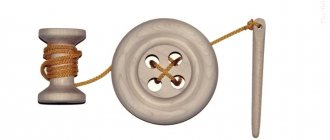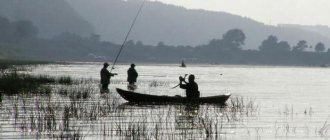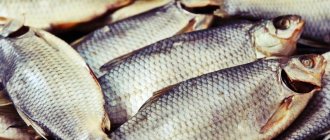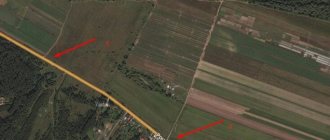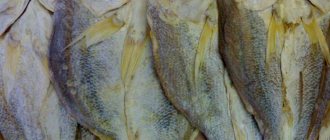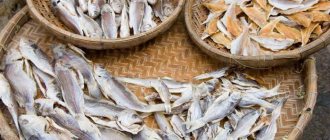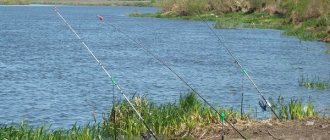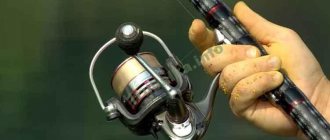June 25, 2021 Victor Home page » Fishing methods Views:
Welcome to my blog! In this article I will talk about where to look for fish in a body of water, what you need to pay attention to when searching for it. An experienced fisherman can be distinguished from beginners by the way they behave when they come to the pond. When amateur fishermen arrive at a pond, they immediately sit down in a place that is closer, more convenient, not far from a car or road. From this article you will learn:
- Where to look for fish in lakes and ponds?
- How to look for fish using a depth gauge
- Finding fish in large lakes and reservoirs
- Where to look for fish on the canals
- Where to look for fish in rivers
An experienced fisherman will never sit down to fish in the first place he comes across; he will first examine the body of water, which shore, what kind of vegetation in the water, what kind of bottom, what kind of current, and with an experienced eye will determine where to look for fish.
Where to look for fish in lakes and ponds?
Let's look at where to look for fish in different bodies of water. Let's start by searching in ponds and small lakes. If you plan to fish in small closed reservoirs, then pay attention to vegetation, flooded trees, and stones. Such reservoirs have a mostly flat, monotonous bottom. Fish do not like to stand in such areas and tend to hide in small shelters, holes, and obstacles. Therefore, first of all, you need to pay attention to any unevenness in the bottom and start fishing from these places.
Where to look for fish in ponds? Ponds were usually formed with the help of humans. Gullies were dug or dams were placed near the resulting ravines. In such ponds, the deepest places are usually near the dams. This must be taken into account when choosing a place for fishing. Fish are usually found in different places in the reservoir depending on the time of year. In the spring, the fish comes out to bask in shallow water closer to the vegetation and stays there almost all the time, where it feeds. In the summer, it comes to these places mainly to feed; in the fall, it goes to deeper places, into holes.
Carefully inspect the pond; if the pond is old, then it usually has a flat bottom without edges, there are wetlands, and trees buried in the water. Fish are more likely to be found near these trees. The depth of the reservoir can be determined by algae, if they are visible from the water, by flooded trees. If this cannot be done, then you can resort to using a depth gauge.
How to look for fish using a depth gauge
The depth gauge will tell you where to look for fish. My depth gauge is made of a plastic ball, which is sold in fishing stores, a sinker and a line strong enough to cast far. The fishing line is threaded through the ball, creating a sliding fastening. When the sinker falls to the bottom, the line passes freely through the ball. But when you start to pull it out, the fishing line is attached to the ball and the depth of the reservoir is determined by the distance from the ball to the sinker. This design can be made separately on a small handle, or it can be attached to a fishing rod and removed from it after checking. But as a rule, experienced fishermen determine the depth and nature of the bottom by casting a sinker with a float. But now you can buy an inexpensive mechanical depth gauge.
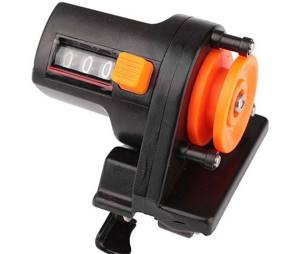
The bottom of a pond can be determined by how the sinker falls to the bottom. If the bottom is hard, the sinker will move away from it a little; on a muddy bottom, it will begin to slowly sink, you will immediately feel it. If there is a clay bottom, the sinker will seem to stick to it; on sandy soil, the sinker will simply fall without clicking or sticking. Even a little experience will allow you to correctly determine what the bottom is on a pond. With the appearance of algae, the best places for fishing are the windows between them; with the onset of summer and heat, when algae cover almost the entire surface, choosing places for fishing becomes more and more difficult.
Morning
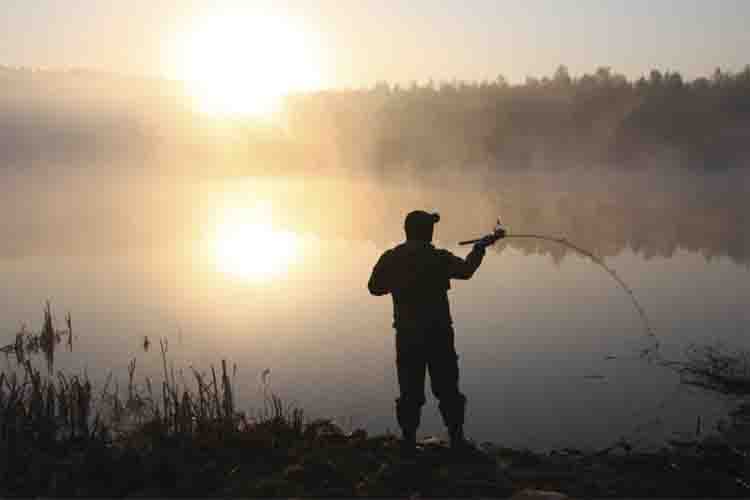
In the morning the fish will be very active. After the night, when the darkness recedes, the fish will be able to see what they are chasing and go after it more aggressively. The sun's rays are not yet released onto the water surface, so the fish feel much safer when the sun's rays do not fall on the water. In the morning you can usually spot fish feeding on the surface of the water in the morning.
The general rule at dawn is that Pisces actively move around in search of food.
Finding fish in large lakes and reservoirs
Where to look for fish in lakes and reservoirs? All large bodies of water usually have a large coastal zone with shallow water. In such cases, you need to determine where the shallow water ends or where there are areas with holes. The quality and depth in the coastal zone can be determined by algae and other plants. But on such reservoirs there is nothing to do without a boat, the only thing is that you can catch it with a feeder and donks with long casting. But the best thing is to use a boat. From a boat you can find convenient fishing spots where fish may be located.
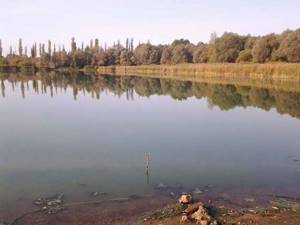
Most small reservoirs are created artificially. In such cases, there may be holes both near the shore and on steep banks. In their place there used to be a forest and even villages. In such reservoirs there are many underwater obstacles suitable for searching where there may be fish. Determine where the sharp descent to depth begins; at such a difference in depth, fish are more likely to be found. It is advisable to choose a place with a gentle slope so that the bait does not wash away from the feeding area. Also, one should not lose sight of the coastal dams and the fortified coastline against erosion. Fish like to stand near such places, even at a short distance. In our reservoir, for example, the old river bed is flooded, that is, a depth of up to 6 meters begins 10 meters from the shore, then again a shallow depth, up to 1.5 - 2 meters.
Where to look for fish on the canals
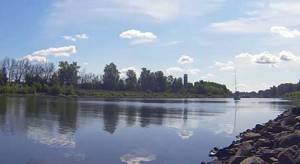
Where to look for fish in the canals? As a rule, anglers do not like to fish on canals. This is due to the fact that canals usually have the same bank along their entire length. That is, it is assumed that the bottom there is absolutely flat without holes or changes in depth. But this is only at first glance. Take a closer look at the reservoir, you will find many places to look for fish. Snags may be flooded in the reservoir; there may have been some work involved in digging the soil. If there are places where the parking or movement of vessels is prohibited, the same should attract fishermen. This means that in these places there are irregularities or underwater obstacles in which fish can calmly stand or feed in these places.
You can learn more about the canal by checking its bottom and depth; such a check will show where to look for fish. If you find differences in depth, preferably with a slight slope, then you can catch good fish there. Also, you should not skip the transition of the coastal slope to depth; such places are rich in aquatic organisms and shells that attract fish for food. If, when examining the bottom, a transverse edge is discovered, be sure to pay attention to it. You should also not miss the transition from muddy water to light water after ships pass through the canal.
Where to look for fish in rivers
When searching for fish in rivers, the size of the river matters a lot. Small rivers are interesting because they can be fished across their entire width, fishing almost all areas. Particular attention should be paid to places immediately behind aquatic plants, areas with a calm, even current. If there are flooded snags and trees in the water, they can serve as shelter for the fish; trees and branches above the water should also not be left without the attention of the fisherman. Fish food usually falls from such branches and trees.

On medium rivers you need to find passages to depth; usually they are not far from the shore. Large fish can be found in such places. Just like on small rivers, snags are interesting for fishing. Especially if there is a deep area near them. Be sure to pay attention to the presence of algae in the water. Where they go under water or stop abruptly indicates that depth begins there. Places such as bridges, dams, dams are interesting for fishing; there you can always find a place where fish are standing.
Where to look for fish on big rivers? On large rivers it is better to fish from a boat or using long casts. Such rivers usually have a large shallow zone, and fish do not approach such places. Deep places can be near cliffs or steep banks. The flat, even sandy shore is not very suitable for finding fish, but you shouldn’t just pass by this place, check its depth, maybe there will be a decent hole there.
Learning where to find fish and choosing a place for fishing is not so difficult. You should not immediately rush to a convenient or well-groomed place by fishermen. Carefully inspect the shore, see what is in the water, plants, driftwood, current. Are there any bubbles, splashes in the water, sometimes you can see the black stripes of the fish itself. Use depth gauges and echo sounders to survey the site. If there are local amateur fishermen on the pond, talk to them.
And then where to look for fish even in an unfamiliar body of water will not be a problem for you. That's all, leave your comments, write how you look for fish in a pond. Happy fishing!
To Home Page.
What is the best way to fish on the river?
There are a great variety of baits (of animal origin) and baits (of plant origin). There is no consensus among fishermen. Therefore, it is better to follow the old wise rule: determine experimentally which bait or attachment most attracts fish in each particular case, and use it. Experienced fishermen, going to the river, always have several types of bait in their “arsenal”.
What baits are used most often when fishing with a float rod? Many fishermen, drawing on their childhood experience, will confidently declare: you need to fish with an earthworm (“crawling”). Indeed, this type of bait, due to its widespread availability and ease of production, enjoys well-deserved popularity.
But there are subtleties here too. Firstly, not all types of fish readily “take it”. Secondly, it is better not to use earthworms right away, but first keep them for 1-2 days in a closed container with damp grass: then the bait will be brighter and more attractive to fish.
A good bait is a “dung worm”, which can be easily obtained in compost heaps, under a layer of humus, etc. It is smaller than rainwater, but much more brightly colored, making it clearly visible even in muddy water.
Many fish (especially ruffe, small perch and roach) readily bite on bloodworms - the bright red worm-like larva of some species of mosquitoes. You can get bloodworms yourself or buy them at any store that sells fishing supplies, as well as for feeding aquarium fish.
Such bait should be placed on a hook very carefully, choosing hooks with a thin and very sharp sting, otherwise the bloodworm will “leak out”, becoming unattractive to the fish. Some fishermen (especially if the bloodworms are small) prefer to tie several larvae with a thin thread and hook the hook to it.
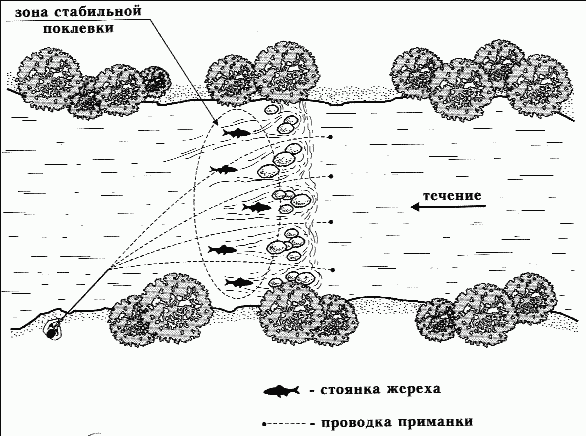
All kinds of larvae are also widely used as bait - for example, blowflies, the larva of which has the not very euphonious name “maggot”. Their big advantage is their dense structure, which makes them easy to put on a hook. In addition, the larvae are stored for a long time at low temperatures without darkening or losing mobility. Perch, roach, bleak, and silver bream are especially willing to bite on maggots.
Of course, this is just a short list of baits. Some fishing enthusiasts successfully use pieces of lard or meat, or beetles. Here, “how many people – so many opinions.”
The most commonly used vegetable attachments are bread crumb, steamed pea grains, and hard millet porridge. In some cases, anglers use threads of seaweed "wrapped" around the hook. Experienced fishermen recommend adhering to the rule: in cool weather, use bait more often, and in hot weather, use bait.
Is it necessary to pre-feed? Most experienced fishing enthusiasts answer this question positively. As bait, you can use the same bread crumb, or pieces of cool porridge. To make them more attractive to fish, it is recommended to flavor the bait with one or two drops of anise oil, or another substance with a strong, pleasant aroma.

